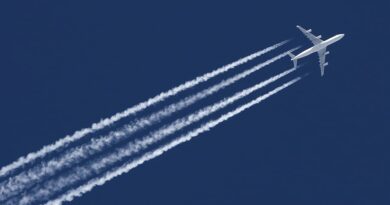Debunking Texas ‘Chemtrail’ Ban Myth: Fact-Checkers Clarify Misinformation Surge

Recent claims circulating on social media suggest Texas is on the verge of becoming the first state to ban ‘chemtrails,’ a term from a long-standing conspiracy theory. Fact-checkers have stepped in to clarify these assertions, citing scientific evidence and official statements to counter the misinformation. The controversy stems from a petition by a group named Clean Texas Skies, which seeks to halt ‘aerosolized spraying’ without proper testing and approval, misleadingly intertwining their language with the debunked chemtrail conspiracy theory.
Understanding ‘Chemtrails’ and the Science Behind Them
For years, the term ‘chemtrails’ has been at the center of a conspiracy theory suggesting that the visible trails left by aircraft are not mere water vapor but harmful chemicals deliberately sprayed for various malevolent purposes. This theory has been thoroughly debunked by scientists and aviation experts. A significant study by the Carnegie Institution for Science involved 77 atmospheric chemists and geochemists, 76 of whom found no evidence supporting the chemtrail theory. Contrails, as they are correctly called, are condensation trails that form when hot humid air from jet exhaust mixes with environmental air of lower vapor pressure and temperature. The persistence of these trails in the sky depends largely on atmospheric conditions, including humidity levels.
Fact-Checking the Texas Petition
The petition that sparked the recent uproar does not explicitly mention ‘chemtrails’ but uses language that echoes the conspiracy theory. It claims that certain ‘crisscrossing bands of substances and particulates’ in the sky are unnatural and potentially harmful. However, meteorological experts and the National Weather Service explain that the patterns described are typical in areas with heavy air traffic, especially when atmospheric conditions are conducive to contrail formation. These contrails can indeed persist for extended periods, depending on the humidity in the atmosphere, with no evidence suggesting they contain chemicals harmful to human health or the environment.
Addressing Misinformation and Public Concern
In response to the spread of misinformation, fact-checkers and scientists emphasize the importance of relying on verified information and scientific evidence when discussing environmental and health concerns. The U.S. Air Force has explicitly stated that ‘chemtrails’ do not exist and that contrails are a natural and safe phenomenon. This stance is supported by decades of atmospheric research. Despite these clarifications, the persistence of chemtrail conspiracy theories highlights the challenges of combating misinformation and ensuring public discourse is informed by facts.
The controversy over the Texas petition and the resurgence of chemtrail theories serve as a reminder of the ongoing battle against misinformation. While the intentions behind the petition may stem from environmental concerns, the misleading association with debunked theories detracts from meaningful dialogue on air quality and public health. As society navigates through an era of unprecedented access to information, the importance of critical thinking and reliance on scientific evidence has never been more crucial. Engaging in informed discussions and questioning the validity of sources can help mitigate the spread of unfounded claims, fostering a more knowledgeable and rational public discourse.
This article has been archived for your research. The original version from BNN Breaking can be found here.


